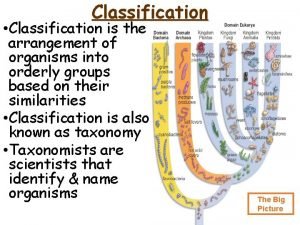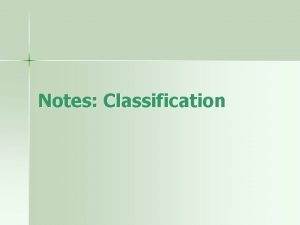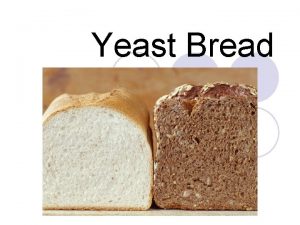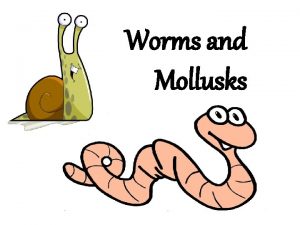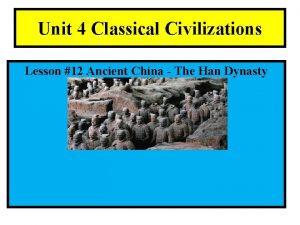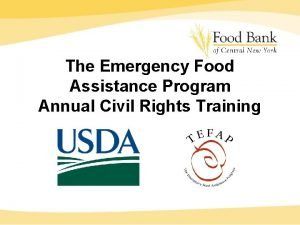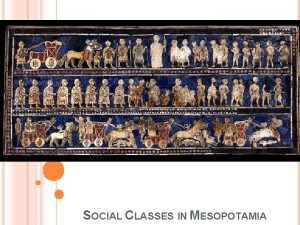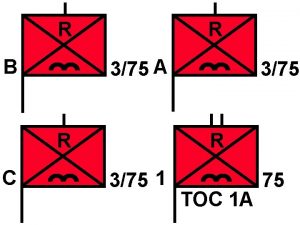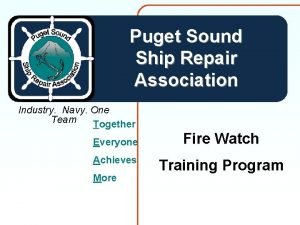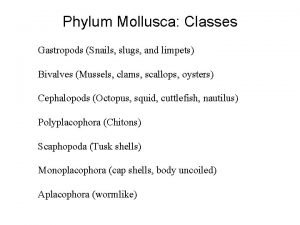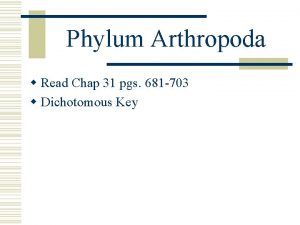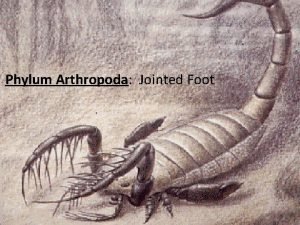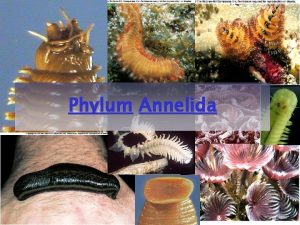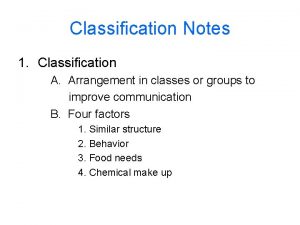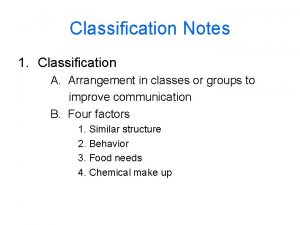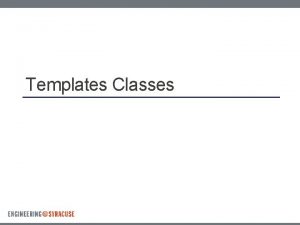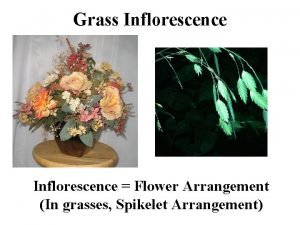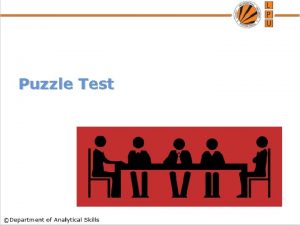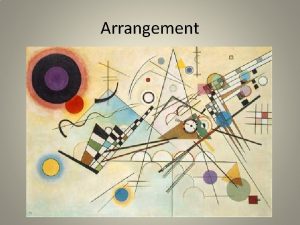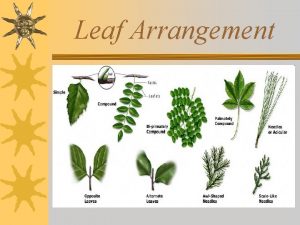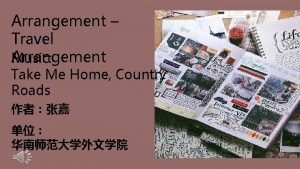Classification Notes 1 Classification A Arrangement in classes




































- Slides: 36

Classification Notes 1. Classification A. Arrangement in classes or groups to improve communication B. Four factors 1. Similar structure 2. Behavior 3. Food needs 4. Chemical make up

Kingdoms 2. Six kingdoms of living things: A. Kingdom Archebacteria 1. Prokaryotic a. Single-celled b. No true nucleus (no membrane) 2. Live in extreme environments 3. Anaerobic 4. Example: Bacteria living in hot springs

Kingdoms B. Kingdom Eubacteria 1. Prokaryotic a. Single-celled b. No true nucleus (no membrane) 2. Live in less extreme environments 3. Mostly aerobic 4. Examples: cyanobacteria, yogurt bacteria

Kingdoms C. Kingdom Protista 1. Eukaryotic a. Complex cell structure b. Membrane bound organelles c. True nucleus 2. Single-celled or many-celled 3. Some plantlike, animal-like, or funguslike 4. Examples: Amoeba, paramecium, diatoms, euglena, algae

Kingdoms D. Kingdom Fungi 1. Most are many-celled 2. Body made of hyphae 3. Saprophytes (obtain food by absorbing dead or decaying tissues of other organisms) 4. Reproduce by spores 5. Decomposers 6. Examples: Club (mushrooms), sac (yeast) zygote (bread mold), imperfect (penicillin)

Kingdoms E. Plant Kingdom 1. Many-celled 2. Photosynthetic – make their own food 3. Examples: Pine tree, rose, corn F. Animal Kingdom 1. Many celled 2. Consume other organisms for food 3. Examples: Scorpion, cat, jellyfish, sponge

Subdivisions of kingdoms 3. Subdivisions of kingdom Using the columbine as an example A. Kingdom – Plant B. Phylum – Tracheophyta C. Class – Angiospermae D. Order - Dicotyledon E. Family - Ranunculaceae F. Genus – Aquilegia G. Species - cearulea

Naming Organisms 4. Naming organisms A. Common names are those given in your language and are often confusing or overlapping B. Scientific names are those given in Latin which describes only one organism – no confusion

Animal Kingdom 1. Animals are made of many cells. Different kinds of cells carry out different functions such as sensing the environment, getting rid of wastes, and reproducing. 2. Animal cells have a nucleus and specialized structures inside the cells called organelles. 3. Animals depend on other living things in the environment for food. Some eat plants, some eat other animals, and some eat plants and animals.

Animal Kingdom 4. Animals digest their food. The proteins, carbohydrates, and fats in foods are broken down into simpler molecules that can move into the animal’s cells. 5. Many animals move from place to place. They can escape from their enemies and find food, mates, and places to live. Animals that move slowly or not at all have adaptations that make it possible for them to take care of these needs in other ways. 6. All animals are capable of reproducing sexually. Some animals also can reproduce asexually.

Animal Kingdom – Phylum Porifera 1. Phylum Porifera A. Pores B. Sessile (permanently attached as adults) C. Two cell layers D. Marine (salt) and fresh water E. Respiration - Oxygen absorbed by inner cell layer

Animal Kingdom – Phylum Porifera F. Digestion – Food absorbed by inner cell layer G. Circulation 1. Flagellum create a current of water 2. No blood

Animal Kingdom – Phylum Cnidaria 2. Phylum Cnidaria- Jellyfish, Coral, Anemones A. Stinging Cells B. Tentacles C. Some sessile / some free swimming D. Respiration - Oxygen absorbed by inner cell layer

Animal Kingdom – Phylum Cnidaria E. Digestion 1. Food absorbed by inner cell layer 2. Single-opening system F. Circulation - Water current distributes gas/food Medusa Form Polyp Form

Animal Kingdom _ Phylum Platyhelminthes 3. Phylum: Platyhelminthes – Flatworms A. Parasites (live off of live host) B. Can regenerate if broken C. Respiration - Oxygen absorbed through skin D. Digestion 1. Nutrients absorbed into inner cell layers 2. Single-opening system

Animal Kingdom _ Phylum Platyhelminthes E. Circulation - nutrients/gas circulated by host F. Examples – planarian, fluke, tapeworm Planarian Tapeworm

Animal Kingdom – Phylum Nematoda 4. Phylum: Nematoda - Roundworms A. Many are parasites/some free-living B. Respiration - Oxygen absorbed through skin C. Digestion 1. Nutrients absorbed by inner cell layer 2. Complete system (two openings) D. Circulation - Food/gas absorbed through cells

Animal Kingdom – Phylum Mollusca 5. Phylum: Mollusca A. Mostly shell-builders B. Mantle - fleshy covering that secretes the shell C. Well developed sense organs D. Respiration - gills for gas exchange E. Digestion - complete with specialized organs F. Circulation - hearts for pumping blood G. Mostly aquatic (live in water) H. Examples: octopus, squid, snails, clams

Animal Kingdom – Phylum Mollusca I. Classes of Mollusca 1. Class Gastropoda a. “Stomach foot” b. Most have shells c. Examples: snails, conch, slugs

Animal Kingdom – Phylum Mollusca 2. Class Bivalvia a. “two shells” b. Hinged, two part shell c. Examples: clam, oyster, and scallops

Animal Kingdom – Phylum Mollusca 3. Class Cephalopoda a. “head foot” b. Large, well developed head c. Most have tentacles d. Closed circulatory system e. Jet propulsion f. Examples: octopus, squid, cuttlefish

Animal Kingdom – Phylum Annelida 6. Phylum: Annelida - Segmented Worms A. Segmented body B. Respiration - Gas exchange through skin C. Digestion 1. Specialized organs 2. Complete system 3. Nutrients absorbed by inner cell layer D. Circulation - Pairs of “hearts” circulate blood E. Example: earthworm, leeches

Animal Kingdom – Phylum Arthropoda 7. Phylum: Arthropoda A. Exoskeleton (outside) B. Jointed legs C. Segmented body D. Circulation - open, hearts for pumps E. Respiration a. Vents and spiracles (land arthropods) b. Gills (aquatic arthropods) F. Digestion - complete system with specialized organs

Animal Kingdom – Phylum Arthropoda G. Classes of Phylum Arthropoda 1. Class: Crustacea (Crabs, lobsters) a. Mostly marine (salt water) b. Cephalothorax and abdomen (Two body regions) c. Five pairs of appendages

Animal Kingdom – Phylum Arthropoda 2. Class: Arachnida (spiders, ticks, mites) a. Many are poisonous b. Two body regions c. Four pairs of legs 3. Class: Insecta (grasshoppers, bees) a. Many fly b. Three body regions c. Three pairs of legs

Animal Kingdom – Phylum Arthropoda 4. Class: Chilopoda (centipedes) a. Many segments b. One pair of legs per segment c. Poisonous 5. Class: Diplopoda (millipedes) a. Many segments b. Two pair of legs per segment c. Not poisonous

Animal Kingdom – Phylum Echinodermata 8. Phylum: Echinodermata A. Spiny skin B. Radial design C. Example: starfish

Animal Kingdom – Phylum Chordata 9. Phylum: Chordata (vertebrates with spinal cord) A. Circulation 1. Closed (veins and arteries) 2. Multi-chambered heart B. Digestion - complete system with specialized organs C. Respiration 1. Lungs (land) 2. Gills (water)

Animal Kingdom – Phylum Chordata D. Classes of Phylum Chordata 1. Class: Cyclostomata (jawless fish) a. Cold blooded b. Cartilage skeleton c. No jaws d. Example: lamprey, hagfish Lamprey feeding on host fish

Animal Kingdom – Phylum Chordata 2. Class: Chondrichthyes (jawed cartilaginous fish) a. b. c. d. e. Cold blooded Sharp teeth Jaws Cartilage skeleton Example: sharks, rays

Animal Kingdom – Phylum Chordata 3. Class: Osteichthyes (bony fish) a. b. c. d. e. Cold blooded Bone skeleton Two chambered heart Scales Example: perch, bass

Animal Kingdom – Phylum Chordata 4. Class: Amphibia a. Live in water and on land b. Smooth, moist skin (exceptions: toads) c. Cold blooded d. Breathe through gills as babies e. Breathe through lungs/skin as adult f. Lay eggs in water g. Three chambered heart h. Metamorphisms (tadpole to frog) i. Examples: newt, salamander, frogs

Animal Kingdom – Phylum Chordata 5. Class: Reptilia a. Cold blooded b. Scales c. Lay eggs on land d. Incomplete four chambered heart e. Breath with lungs from birth f. Examples: Snakes, lizards, turtles

Animal Kingdom – Phylum Chordata 6. Class: Aves a. b. c. d. e. f. g. Warm blooded Complete four chambered heart Streamlined (aerodynamic) body Feathers Lay eggs on land Light weight skeleton Examples: Eagles, seagulls, turkeys

Animal Kingdom – Phylum Chordata 7. Class: Mammalia a. Warm blooded b. Hair c. Live birth (placentals) Placenta - nourishes baby while developing in Mom d. Mammary glands 1. Produce milk 2. Nurse young e. Two pairs of limbs f. High functioning brain and sense organs

THE END! Whew
 Classe e subclasse das palavras
Classe e subclasse das palavras Pre ap classes vs regular classes
Pre ap classes vs regular classes Wisc
Wisc Main classes of library of congress classification scheme
Main classes of library of congress classification scheme It is the arrangement or classification
It is the arrangement or classification Classification arrangement
Classification arrangement Classification arrangement
Classification arrangement Merits and demerits of takhtajan system
Merits and demerits of takhtajan system Bayesian classification in data mining lecture notes
Bayesian classification in data mining lecture notes Classification of living things notes
Classification of living things notes Function of bread
Function of bread What are three classes of mollusks
What are three classes of mollusks Summer springboard jmu
Summer springboard jmu Ivc summer classes for high school students
Ivc summer classes for high school students Stream classes in c++
Stream classes in c++ Ancient china social pyramid
Ancient china social pyramid Titanic social classes
Titanic social classes Song dynasty social structure
Song dynasty social structure Federally protected classes
Federally protected classes Canterbury tales social classes chart
Canterbury tales social classes chart Noble hierarchy pyramid
Noble hierarchy pyramid Bravo company motto ideas
Bravo company motto ideas Teaching multilevel esl classes
Teaching multilevel esl classes Transcortin
Transcortin Social class pyramid of latin america
Social class pyramid of latin america Social classes in mesopotamia
Social classes in mesopotamia Latin american social classes
Latin american social classes Exploration
Exploration Arc375
Arc375 Classes of fire on ship
Classes of fire on ship Type of fire that involves flammable liquids
Type of fire that involves flammable liquids Kingdom genus species order
Kingdom genus species order Classes of phylum mollusca
Classes of phylum mollusca Classes in phylum arthropoda
Classes in phylum arthropoda Classes in phylum arthropoda
Classes in phylum arthropoda Arthropoden definition
Arthropoden definition Annelids classes
Annelids classes






